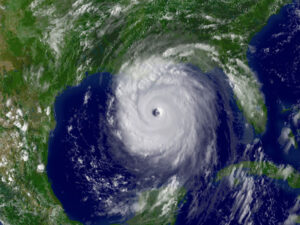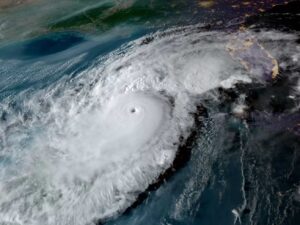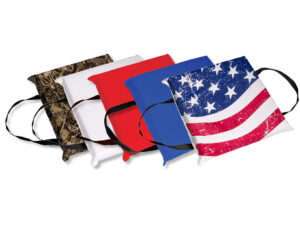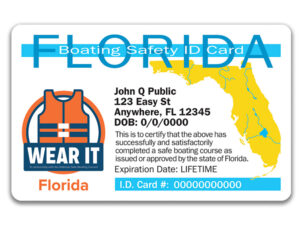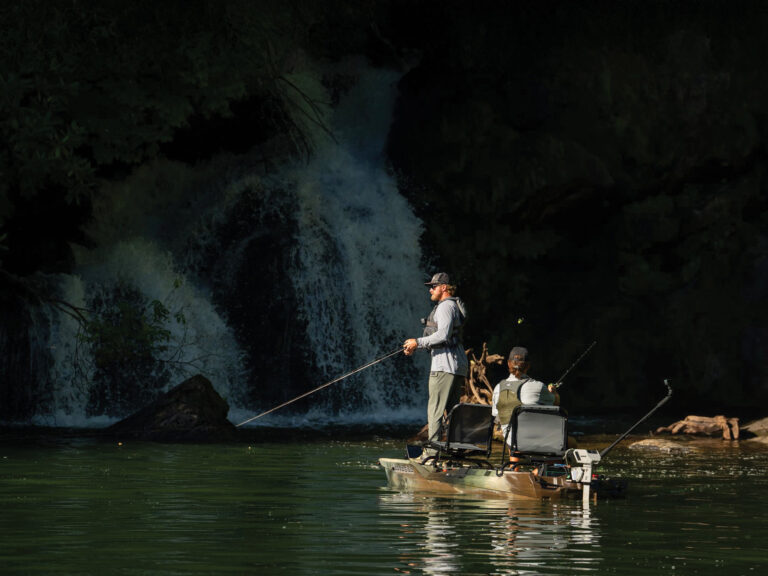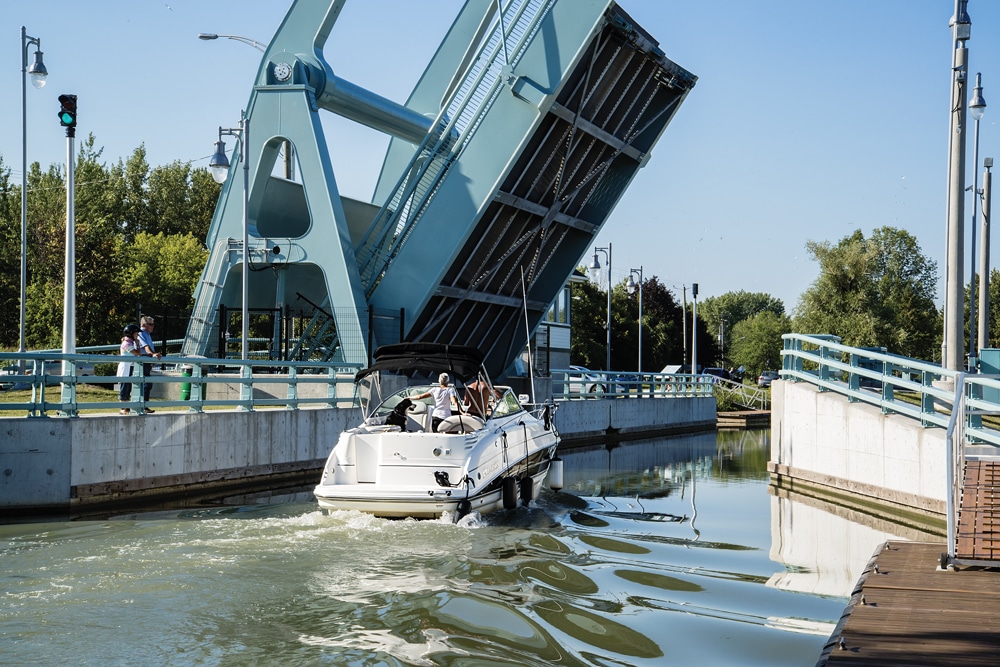
Safer Boating Through Bridges, Locks & Dams
Meandering along winding rivers or squeezing down narrow channels isn’t particularly hard with today’s chart plotters. Even rain, fog and night are cut by high-definition radar and night-vision gear. But electronics offer little help where man-made obstacles — bridges, locks and dams — cut waterways. Try these tips to help you through them.
Bridges
Hillsboro Inlet, north of Fort Lauderdale, Florida, narrows to only 60 feet wide beneath the drawbridge. “The current increases significantly right under the bridge,” says local captain, artist and tackle-store owner R.J. Boyle (rjboylestudio.com). “On a spring tide, I’m up to 3,500 rpm just to get through,” he says of his 27-foot Ocean Master. Let boats with a strong current on their stern through the bridge first.
“Know the height of the boat with all antennas down,” says John Wampler (yachtaide.com), a delivery skipper with hundreds of trips to his credit. Use a brush handle beneath a low bridge as a gauge, or measure from your boat’s highest point to the deck, and then measure from that deck to the waterline and include deck camber.
“Call the bridge and confirm that clearance boards [signs on bridge fenders] show height at low steel” (bridge tender slang), Wampler says. Expect 2 to 4 feet higher clearance in the center of bascule bridges. Keep binoculars handy to check from afar. For an explanation of “low steel” and other bridge slang, visit the Coast Guard’s Glossary of Bridge Terms at boatingmag.com/glossary.
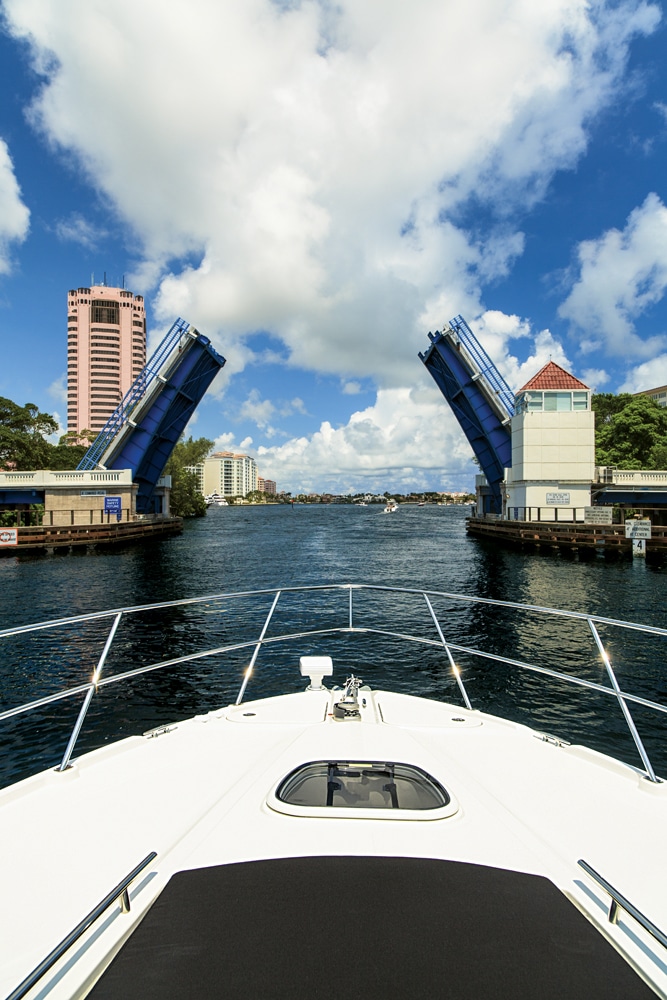
Safer Boating Through Bridges, Locks & Dams
Check a cruising guide for the bridge name, opening schedule and VHF channel (usually 9 or 13). Let bridge tenders know you’re waiting, and listen for other waiting boats and bridge updates, like an approaching ambulance that requires an opening delay. Make it easier for all at crowded bridges by gauging wind and current to hold position with minimal throttle and shift jockeying. Leave room for boats that can pass under closed bridges, and on long waterways, let faster boats through first to avoid having them pass you again later. Boating Magazine
Unnecessary bridge openings can garner you a $1,000 fine, but this takes weather and traffic into account, deferring to the skipper’s judgment when clearance is close. At Hillsboro, Boyle says, “on outgoing tide, the current pushes you hard up against the north side.” But that bridge span slopes up from south to north with the highest clearance at the dangerous north side. “If you don’t know that you can clear at the lowest point, call for an opening,” Boyle warns — a good rule in strong current or gusty wind.
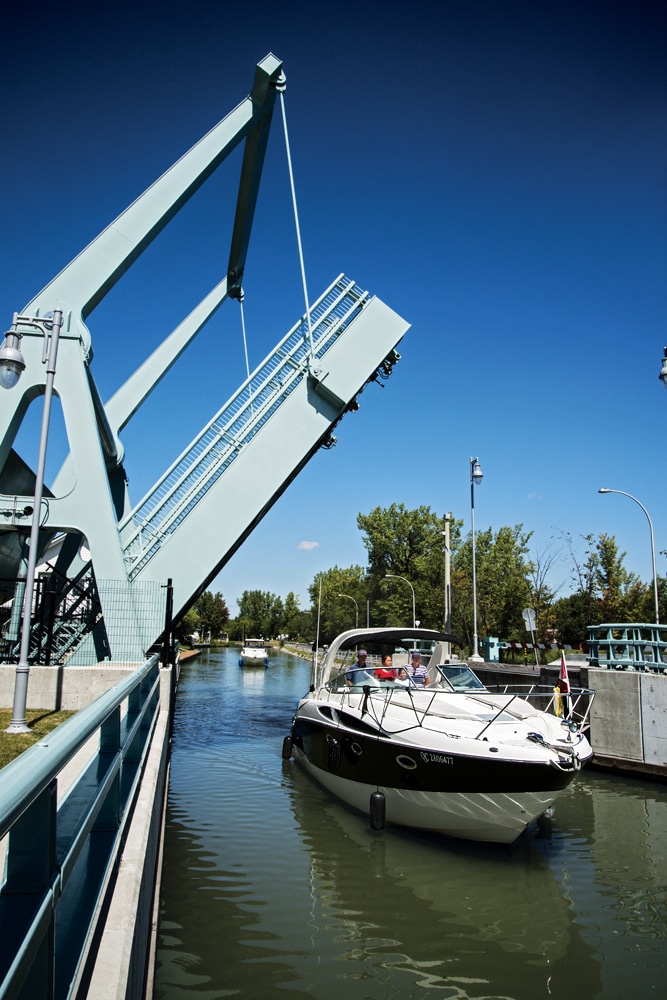
Safer Boating Through Bridges, Locks & Dams
Set a GPS waypoint and monitor ETA at bridges with widely spaced openings — up to an hour at some places on the Intracoastal Waterway. “Throttle back if you’re not going to make it, instead of blasting up only to have a long wait,” Wampler says.
For personal watercraft (PWC), height is no concern, but other traffic is. “Assume you’re invisible, that no one sees you,” says Sam Thomas, who leads PWC excursions throughout the southeastern United States for Discovery River Tours (pwctours.com). He also warns that just an 18-inch wake can throw an idling PWC sideways into a bridge piling. He’s right. Any boat can be slammed, so no wake under bridges.
Off the beaten path, low railroad bridges might require 24 hours’ notice to open. “Pay attention to tides and river water levels,” Thomas says. “You might get under going one way but then not be able to get back.”
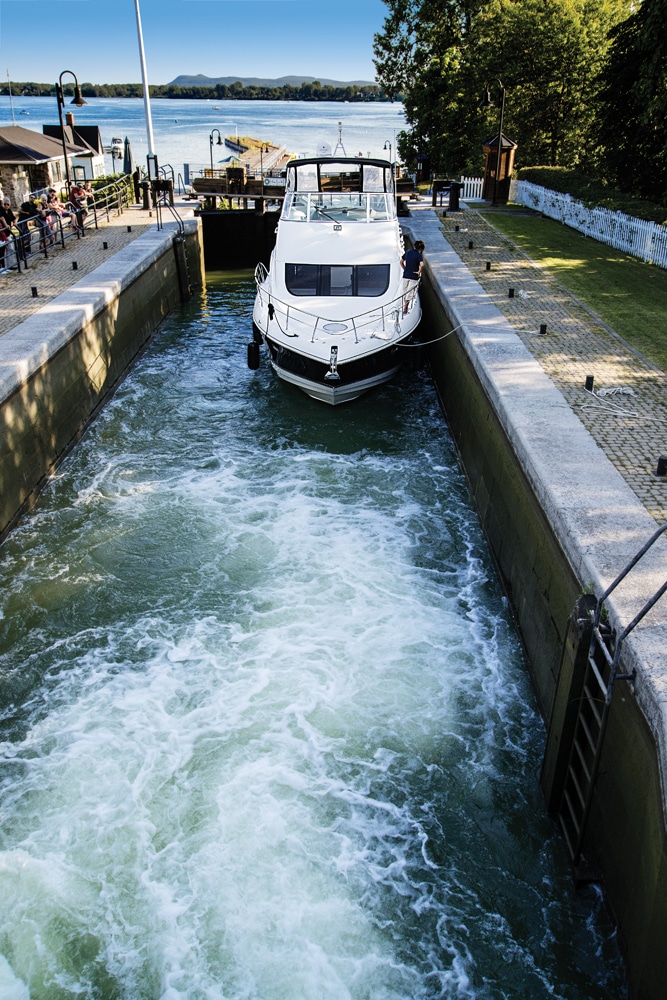
Safer Boating Through Bridges, Locks & Dams
Locks
“Slow down early,” delivery captain John Wampler says. Wakes travel far in narrow canals and then bounce boats into concrete and steel lock walls. Make room for exiting boats.
“Call on the VHF,” says Alain Malo, lockmaster on the Chambly Canal south of Montreal. “I ask bigger boats in first so they have more space to maneuver.” He also places sailboats so deep keels are away from underwater turbulence.
“When a lock blocks the canal, current isn’t an issue,” Wampler says, “but check for current before approaching a lock alongside a dam or spillway.” Wait for a green light, and coast in. Engage propellers as little as possible.
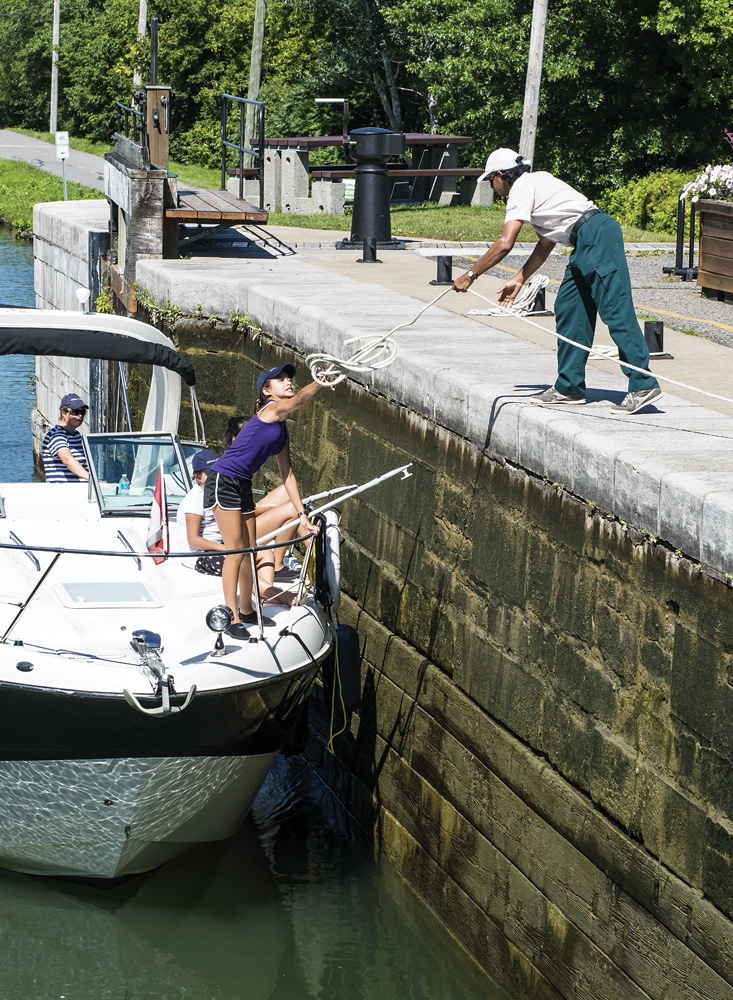
Safer Boating Through Bridges, Locks & Dams
Have four long lines handy, even if locks provide lines. While rising or falling, man lines continuously and never fully cleat lines off. Loop your lines around floating bollards and secure both ends aboard, always ready for a quick release — those bollards can
hang up. Use lots of fenders, including one well forward to protect the bow if the stern swings out far. Place fenders for both a tall vertical wall and the equivalent of a dock very near the waterline. Stuff fenders into heavy trash bags to keep them clean of grease and creosote from barges, which are common on lock walls. Boating Magazine
In narrow or shallow locks, enter dead in the center. Water that your boat displaces can push the bow away from the wall. Twin-engine inboard boats might suck the stern toward the wall when the propeller nearest the wall is put into forward, or push the boat away when that propeller reverses.
“In a tall lock chamber, that far lock wall seems closer than it is,” Wampler says. If you can’t see the stern from the helm, post crew there with a radio.
Large locks typically flood from below the water, rising with moderate turbulence and falling with less. “You’ll be OK with just a bow line and stern line,” Wampler says. These might be attached to large floating bollards recessed into lock walls, which rise with the water. When lines are provided from above, Wampler says, “use the cleats across the boat from the lock wall. As the water goes down, that gives the line a better angle to hold the boat against the lock wall.”
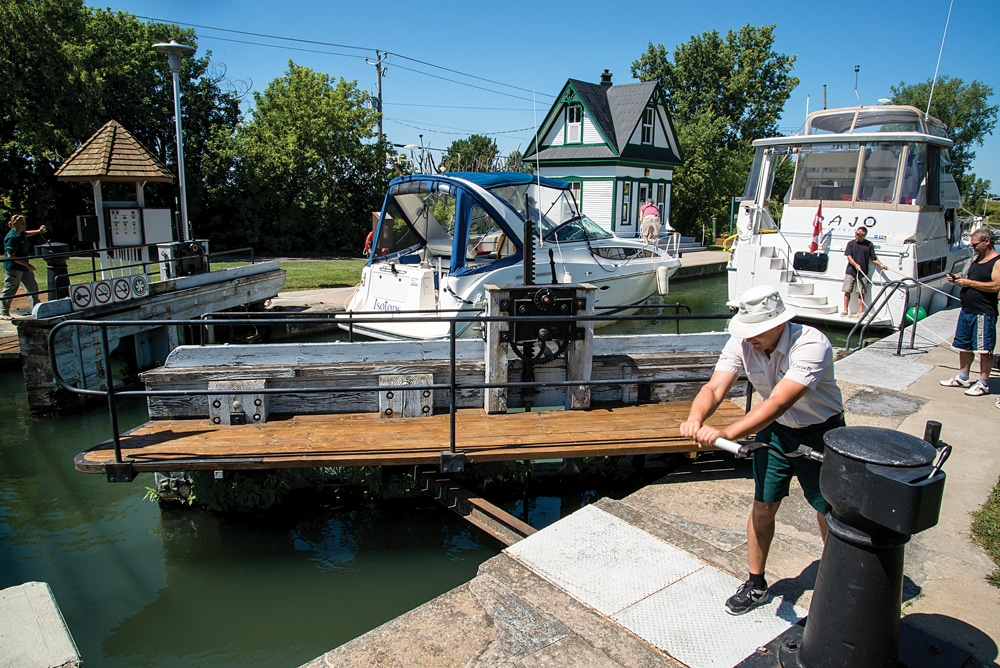
Safer Boating Through Bridges, Locks & Dams
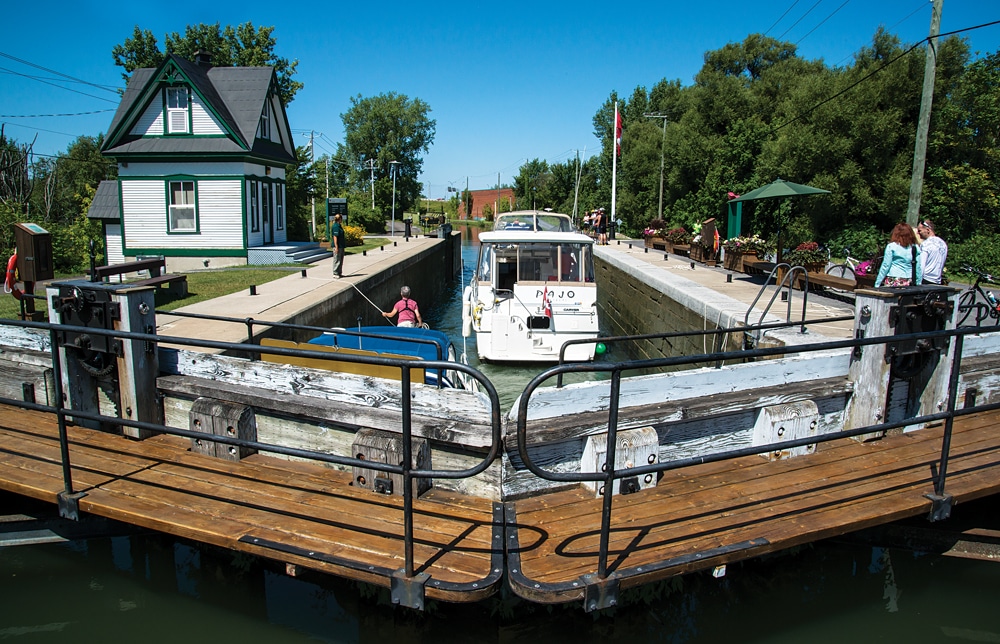
Safer Boating Through Bridges, Locks & Dams
Some locks, like those on Florida’s Okeechobee Waterway, flood or drain by cracking open one gate. “If you’re locking down, a surge pushes the boat forward,” Wampler says. “Going up, the surge pushes you aft,” so he suggests adding a spring line.
PWC riders need a radio. “You need a VHF,” Sam Thomas, the PWC tour operator, stresses. “Lockmasters will tell you where you’ll have the least turbulence.” Always be prepared for sudden currents. Thomas has more trouble during an 8-foot rise on the Okeechobee Waterway than he does in an 80-foot lock on the Chattahoochee River in Georgia. “Lock walls are like two-grit sandpaper,” he says. “The rub rail is going to get scratched, but it’s replaceable.” Fenders aren’t practical on PWCs. Gloves are imperative, but they also won’t last past the trip. Brush up on your lock etiquette at boatingmag.com/lock-and-bridge-etiquette.
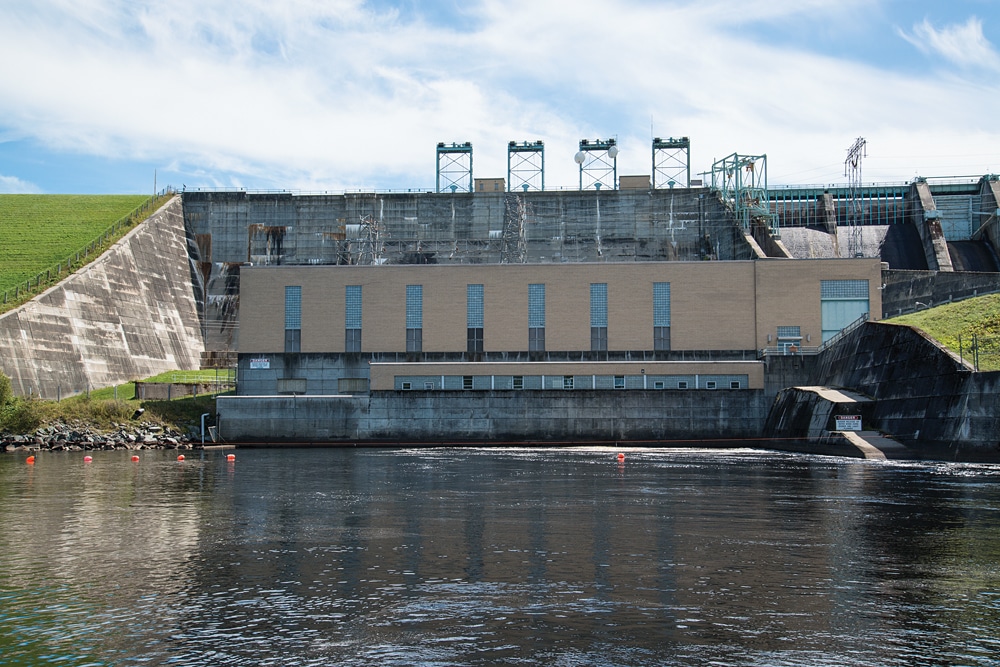
Safer Boating Through Bridges, Locks & Dams
Dams
Even if the spillway is closed, they’re probably making power,” Sam Thomas warns. “Stuff in the water is being pulled at the same speed you are. It will fool you into thinking there isn’t much current.”
“You might have little or no current, and they bring a generator online and you’re suddenly pulled toward the dam,” says Officer Scott McLain, a 15-year veteran of the New Hampshire State Police marine patrol unit. Reservoirs are often widest and seem peaceful just above dams, but McLain warns you to head upstream for water sports and suggests sailboats and kayaks stay near shore in case wind dies or paddlers tire. Dams also aren’t forgiving of engine trouble or empty gas tanks in water hundreds of feet deep — too deep to anchor.
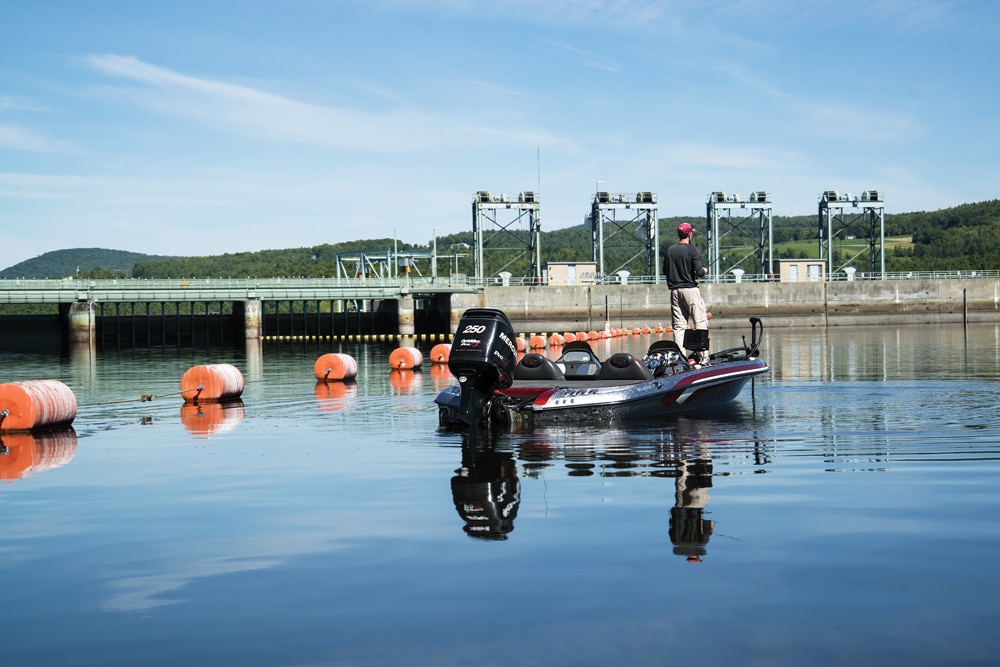
Safer Boating Through Bridges, Locks & Dams
Be aware of any nearby low-head dams or “weirs” — submerged concrete walls that allow water to spill over like at the edge of an infinity swimming pool. “You don’t see the dam until you’re right on top of it,” McLain says. Safety float lines just upstream are removed ahead of winter ice, so watch for signs by the shore.
Weirs with steep backs are particularly deadly below. “Water flows away from the dam down deep and then circles back toward the dam on the surface,” McLain warns. “You get sucked under the dam and caught in that backflow, along with logs, whole trees and other debris.” Give weirs a wide berth, both upstream and downstream.
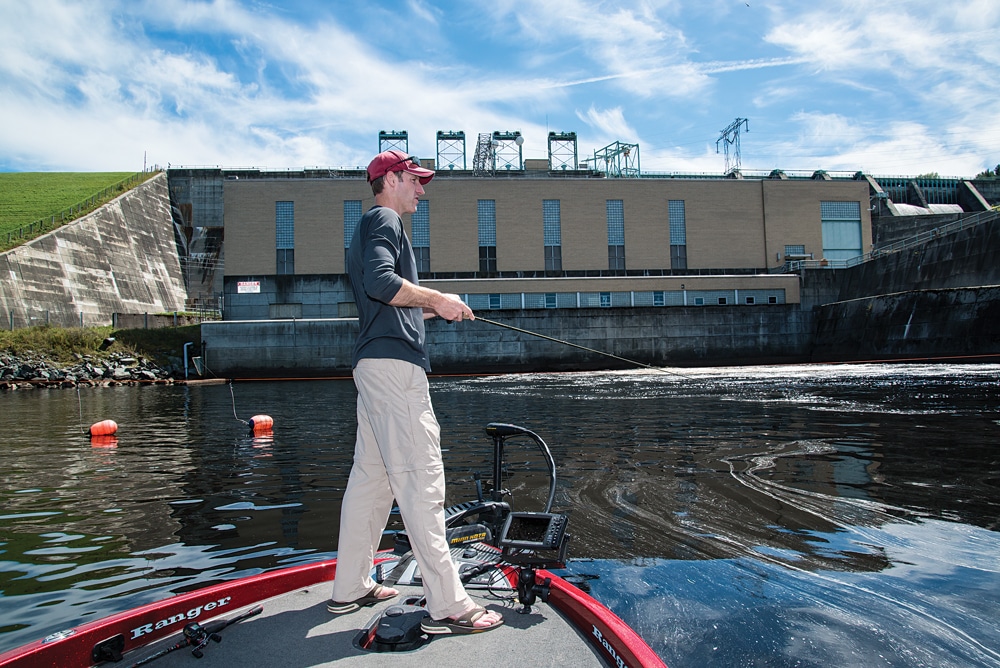
Safer Boating Through Bridges, Locks & Dams
When launching PWCs and kayaks at ramps close to dams, head cautiously upstream. Don’t swim or water ski near a dam, and don’t walk ashore or wade below a dam since water can change in moments. Never anchor below a dam, since current might increase and water suddenly rise. Boating Magazine
More danger waits below dams. When floodgates open or generators come online, what seemed like a peaceful pond becomes a torrent. Wide rivers might rise over hours, but, McLain says, “small rivers can fill very quickly.” Boats get into serious trouble when they can’t release anchor lines in swift current or rising water. Swimming is particularly risky. Check out the advice provided by one of the most famous dam areas in the country, the Tennessee Valley Authority at tva.com/river/hazwater.

